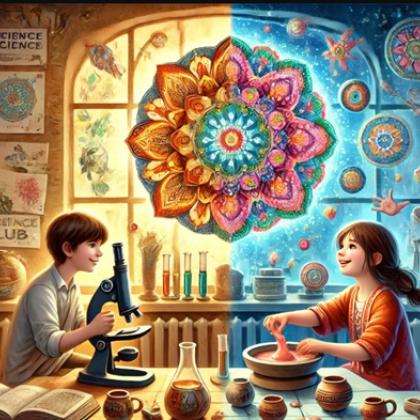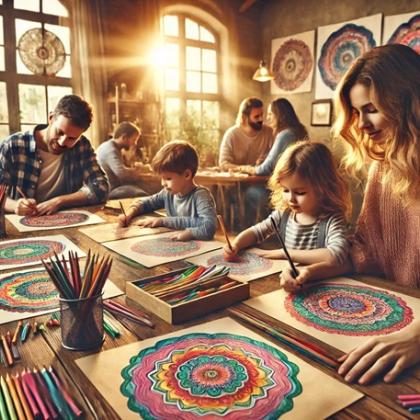Autor: Zuzana Řezáčová Lukášková, zveřejněno 29. 10. 2019
A mandala is a geometric configuration of symbols. In various spiritual traditions, mandalas may be employed for focusing attention of practitioners and adepts, as a spiritual guidance tool, for establishing a sacred space and as an aid to meditation and trance induction.
Mandalas originate in India from Vedic, Buddhist and Jain spiritual traditions and have been used for thousands of years - when you go to most Indian temples in India you will find mandalas. When Buddhism was exported to the rest of Asia including Tibet, Mandalas were also exported within art and tantric traditions. Mandalas are also associated with Tibet, the heart of buddhism. The spiritual goal of Tibetans is enlightenment; stepping out of the suffering connected to the cycle of rebirthing and arriving into a state of perfect balance and beauty. It order to achieve this it is necessary to surrender all the worldly desires and the Ego. Mandalas – traditional instruments of visual meditation can help us with this process. They bring us understanding of the self and of the universe around us. The creation of Tibetan mandalas, symbolizing the perfect balance and harmony, has to follow very strict rules. They are depicted as rectangular images on rolling cloths, showing Buddha's completion, the cycle of life, spiritual guides or circular meditative mandalas Kyil-khor, which represent the journey towards enlightenment; the journey to the core of a mandala. However, the highest form of Tibetan mandala depiction in the physical worlds is the sand picture; Dul-Tson-Kyll-Khor, the "mandala of colored powders".
Christian mandalas can be seen in rotundas and in the architecture of churches which are oriented to the east, to the place of resurrection of Jesus Christ. Circular patterns in Christian tradition can be also found in rosette windows, in the circular labyrinths on cathedrals' floors, and on the domes decorating various "houses of God". Rosette windows are usually made from colored glass which has been produced by using crushed gemstones. Thanks to this the light that passes through the window, gets dispersed but absorbed at the same time. That is why such windows attract our attention; they make us focus into their very center, which works as a meditative tool; a tool for contemplation with God and the very self. The rosette may become not only a map of all the universe, but of our inner mental world as well. The predominant color of rosette windows is red and blue, warm and cold, which together create purple, the sacred color, the color of spirituality and of the journey into the core of the self. Just like a prayer in the chapel, monastery gardens also uplift the spirit. The gardens are a meeting place of nature and God, a space of peace and quiet contemplation. Some have bush labyrinths, symbolizing pilgrim's journey of self discovery; the journey of finding God.
Slavic culture is the closest to Czech people and yet, we know so little about it. This is partially because there are not many records from the ancient slavic (pre-christian) times and partially because traditionally, we easily accept foreign ideas as better, more progressive and we abandon what is familiar and "old". We are of a “butterfly nature“. :-) Lets take a moment to look at our gods, goddesses and especially, mandalas. Slavic culture was full of decorative ornaments, jewelry, ritual instruments, as well as circular items for everyday use. Many temples, sacred places, as well as dwellings, were build in the shape of a ring, having the most important thing, the fireplace, right in the middle. Hence, mandalas followed the Slavs daily at every step. Even the highest slavic god Svarog sleeps in a sunny mandala which is carried by Svarožic, Svarogs Son, across the day sky. Guardians of the four cardinal directions Perun (north), Svantovit (south), Dažbog (east), and Radegast (west) help him to rule the Earth.

